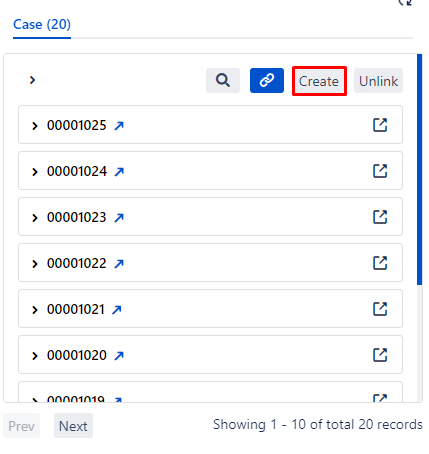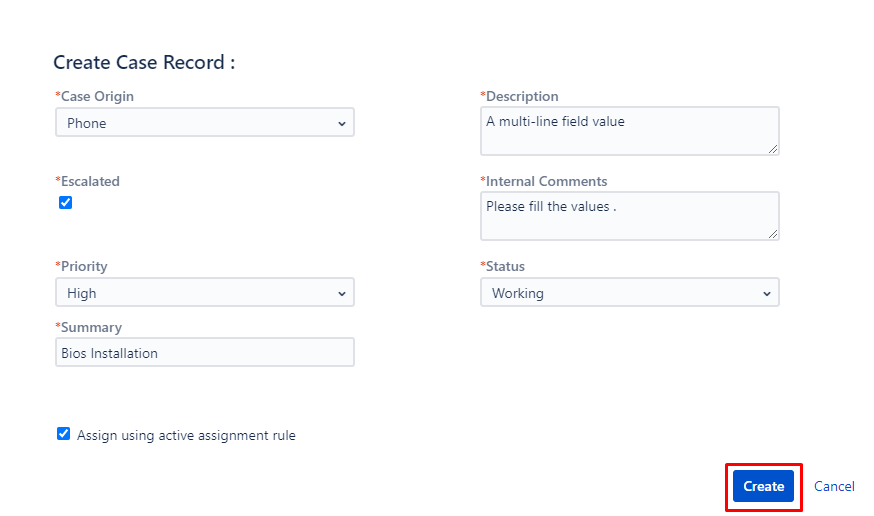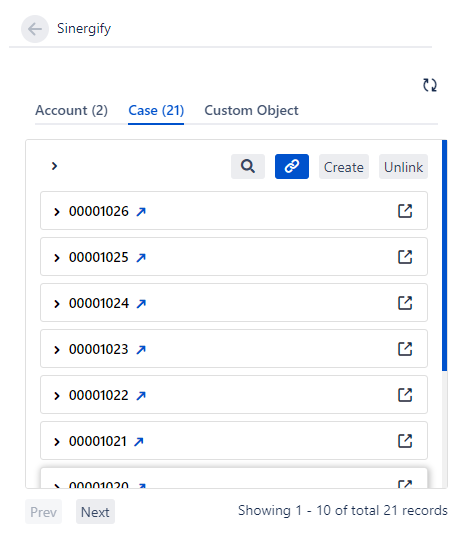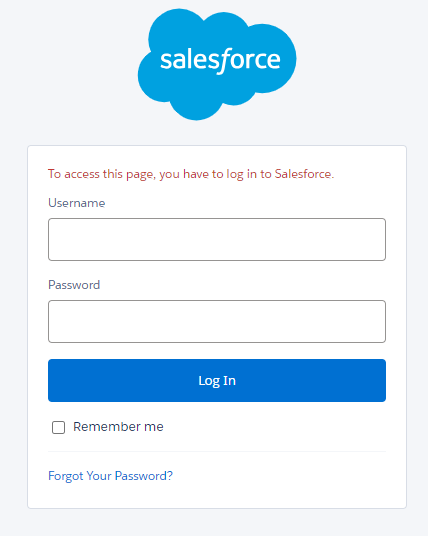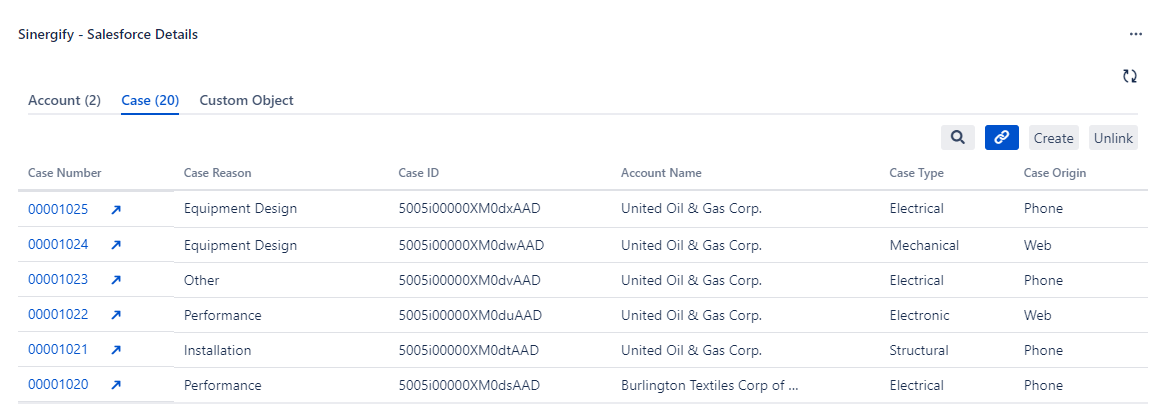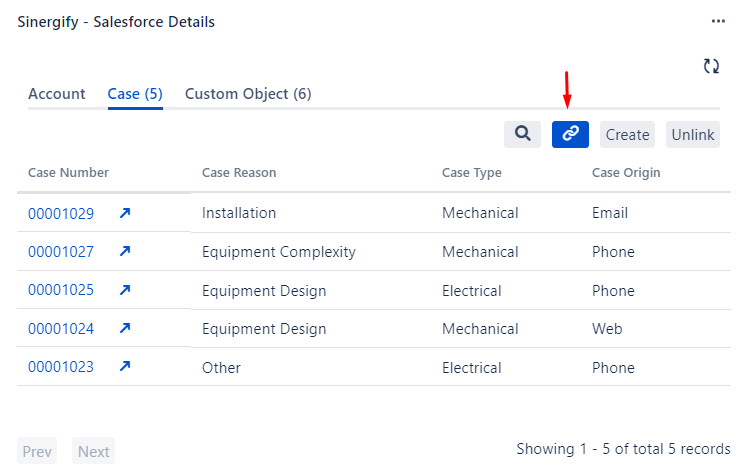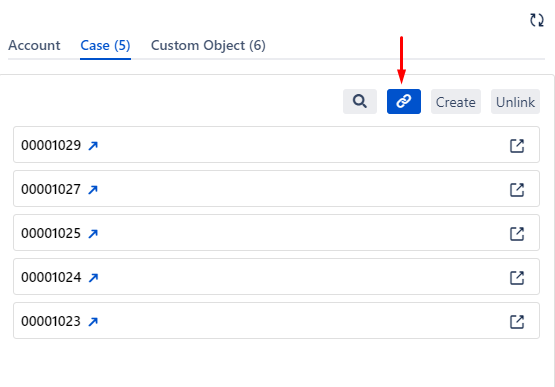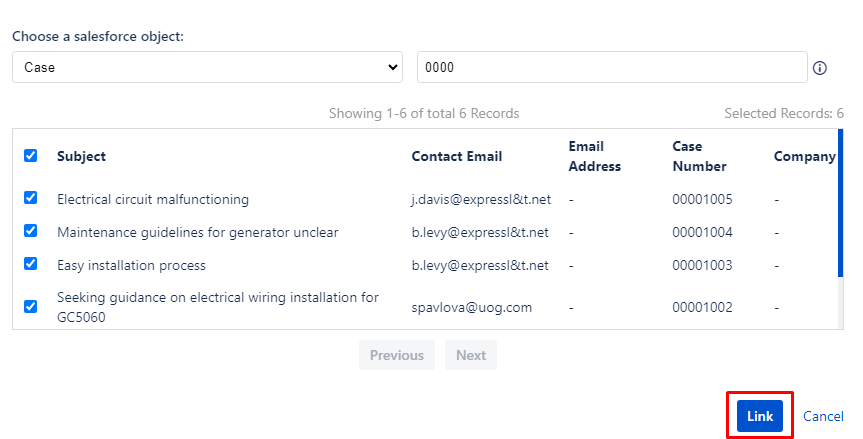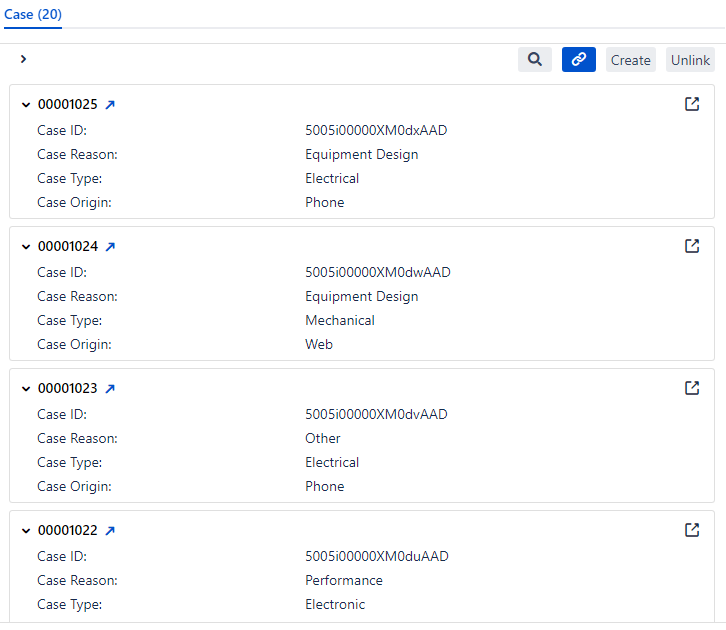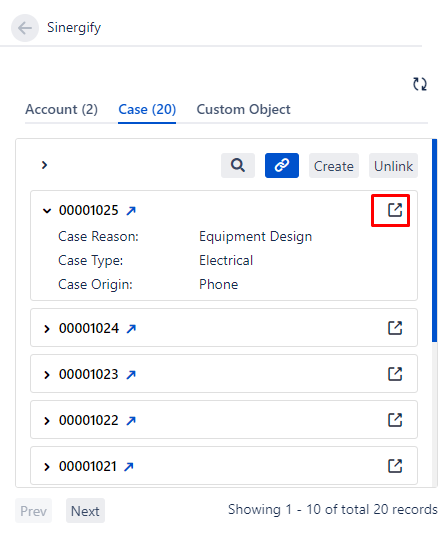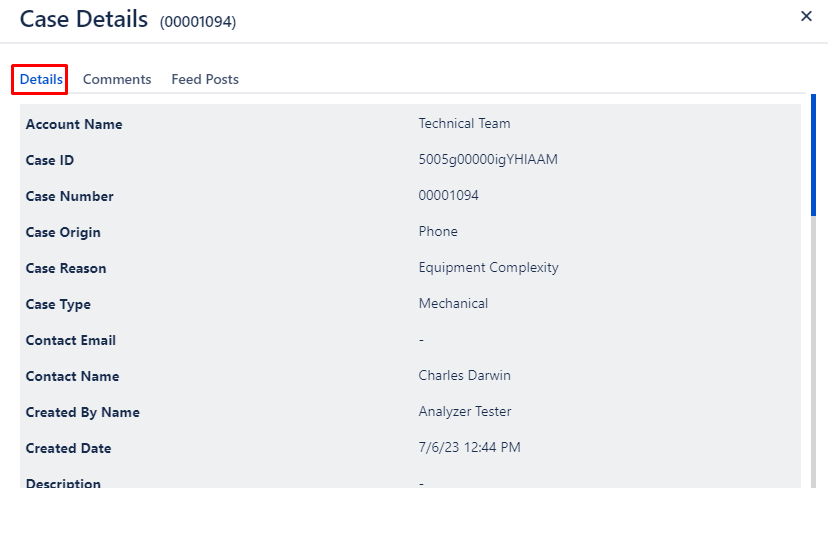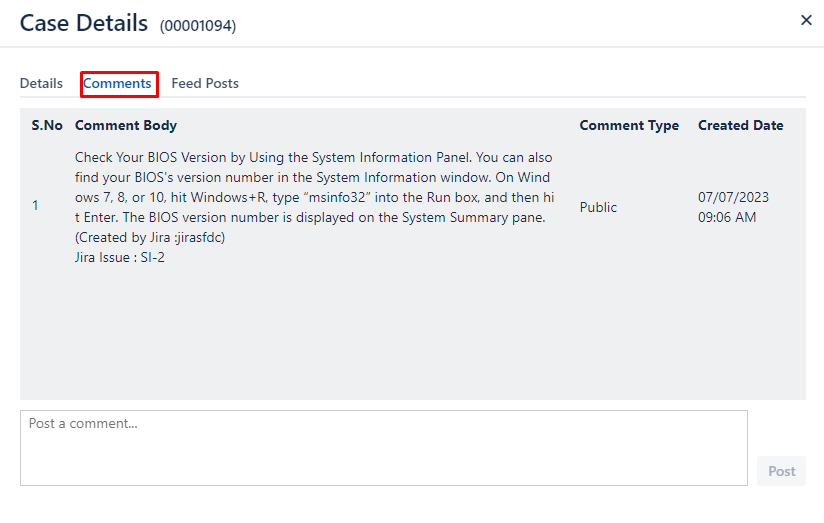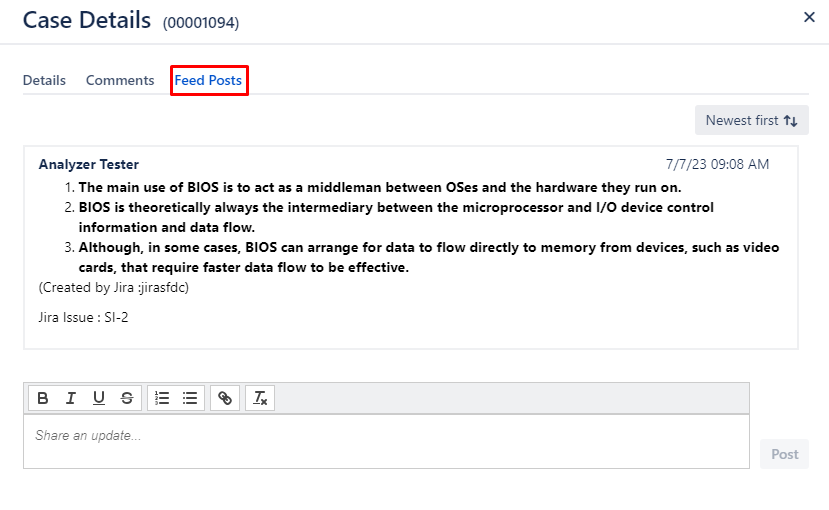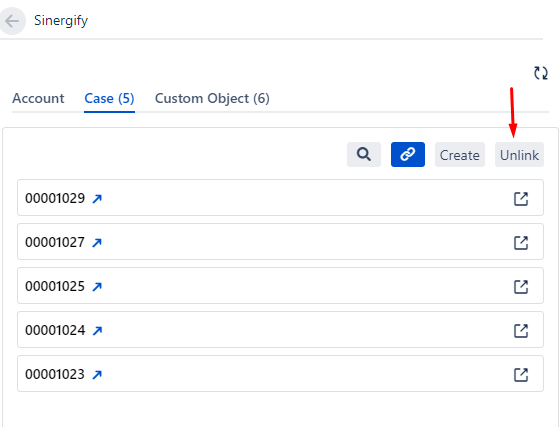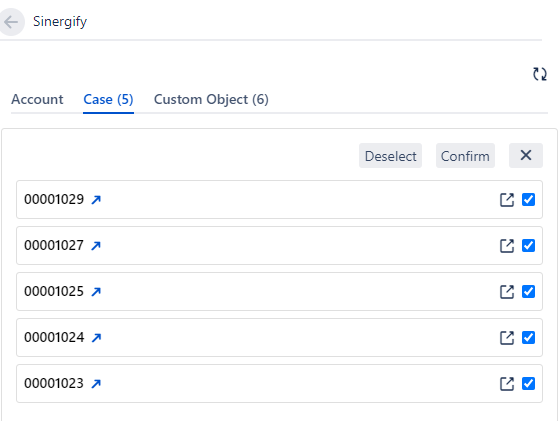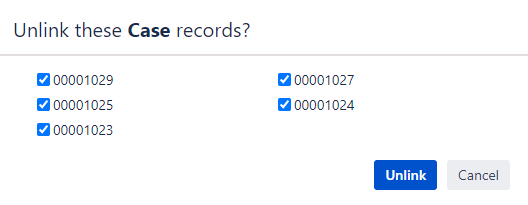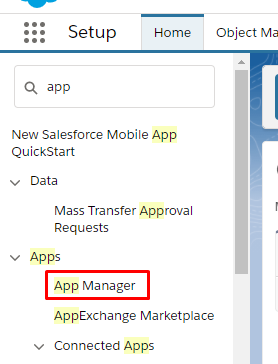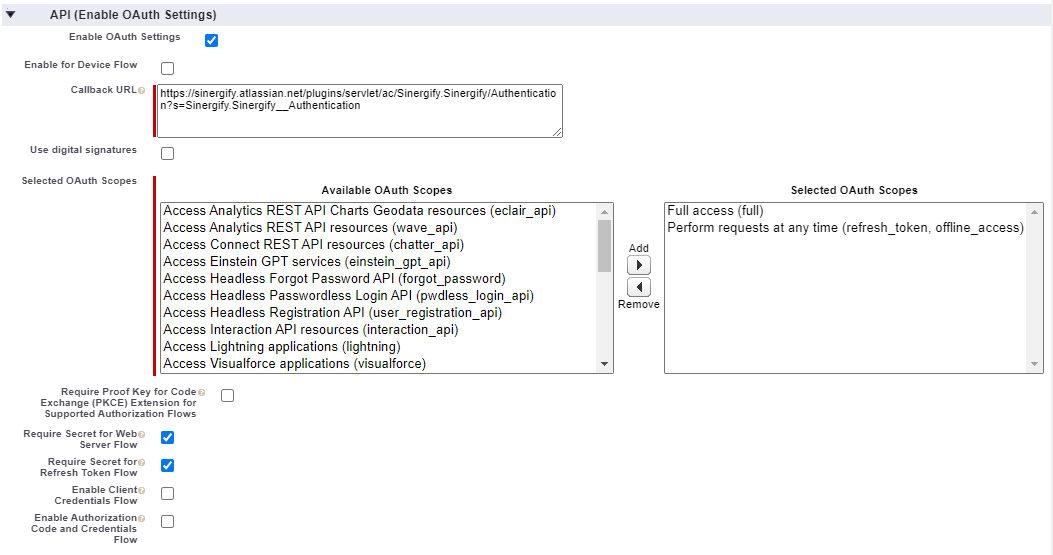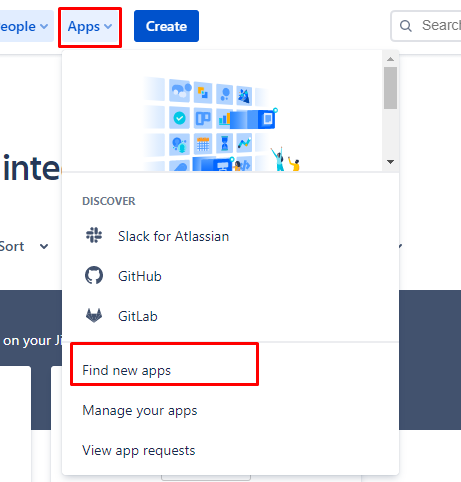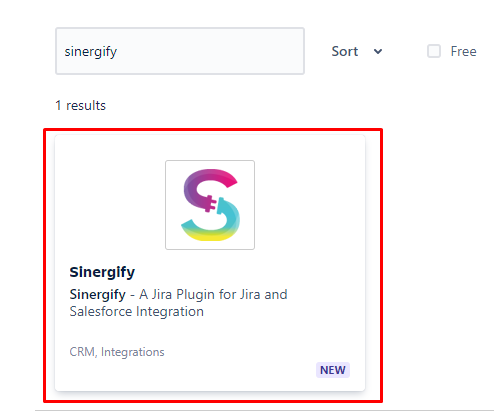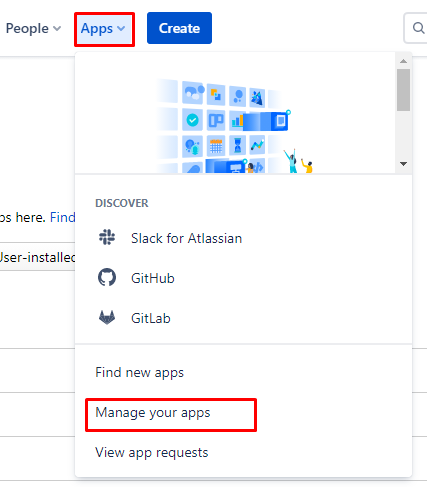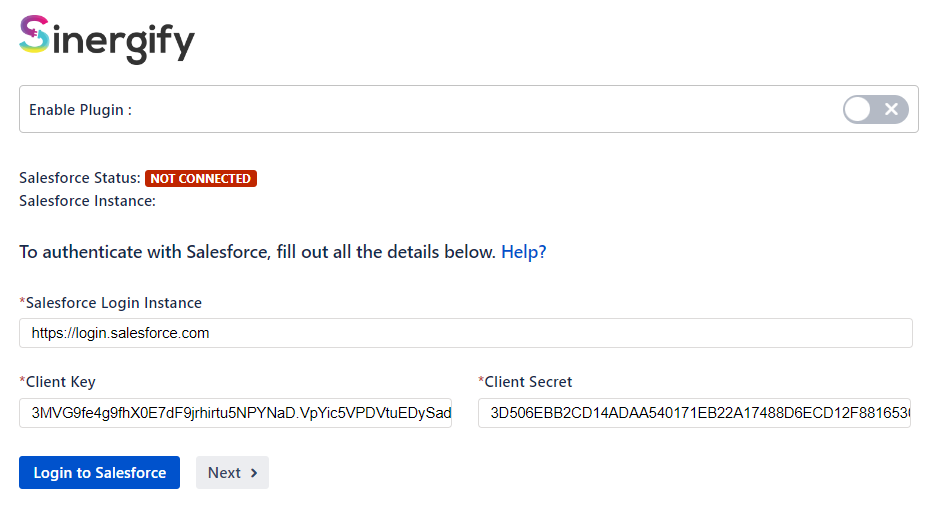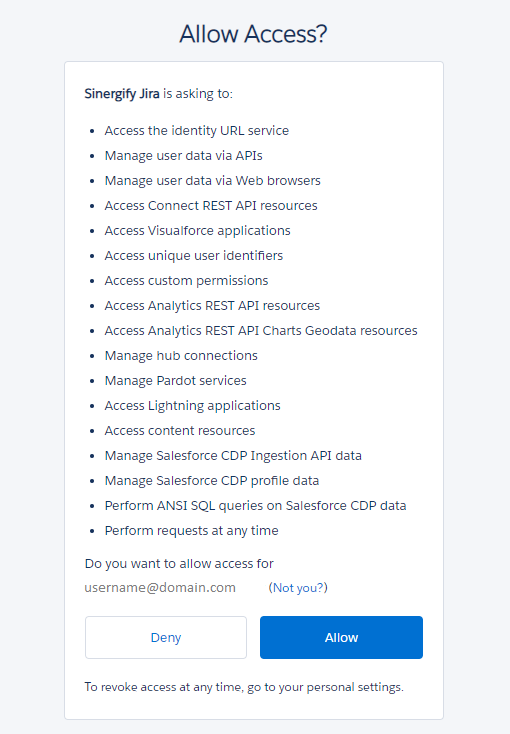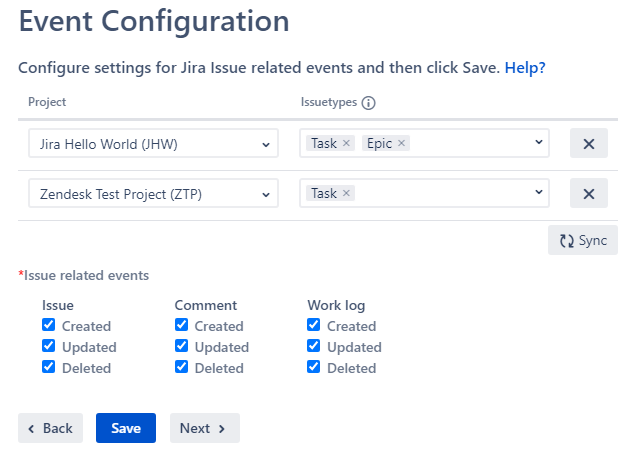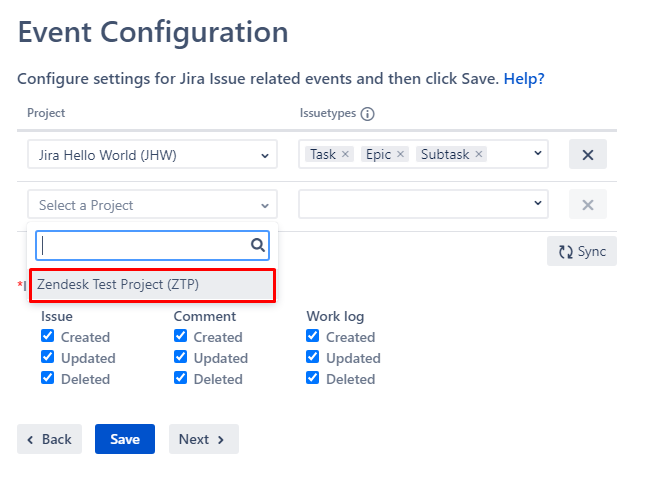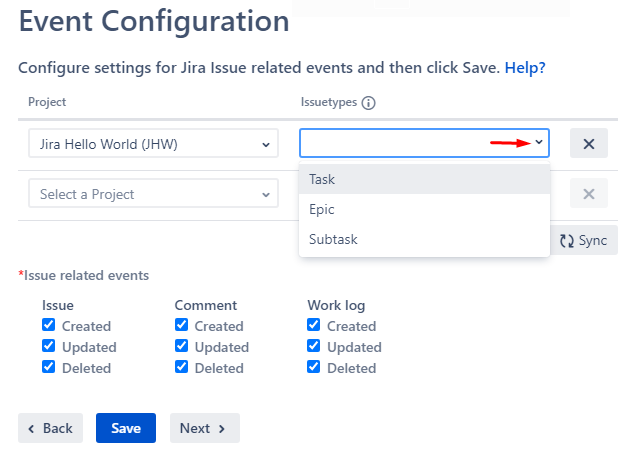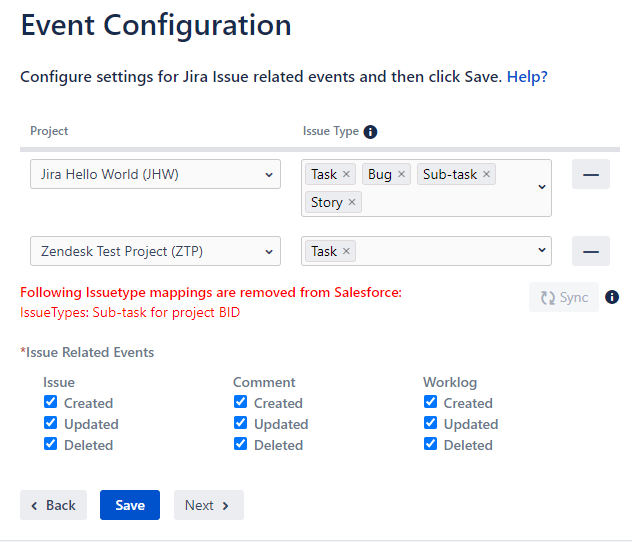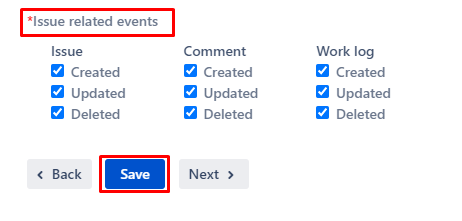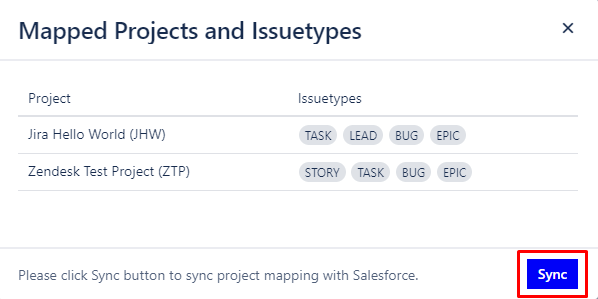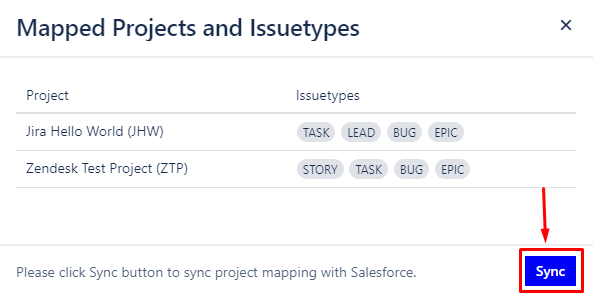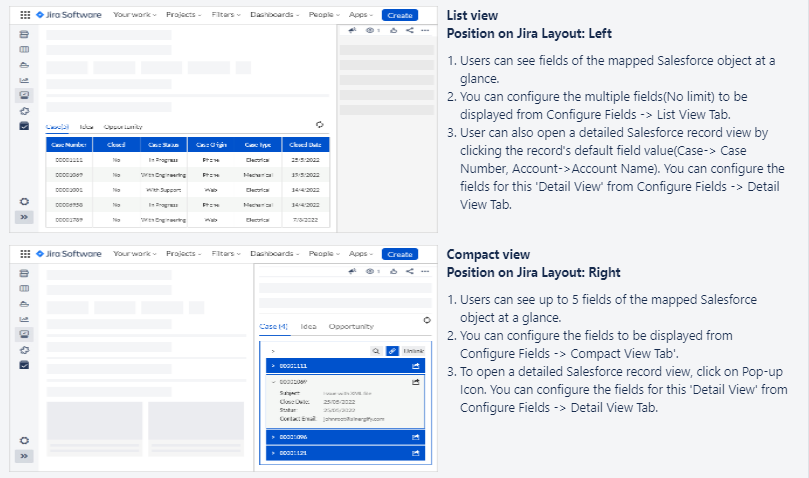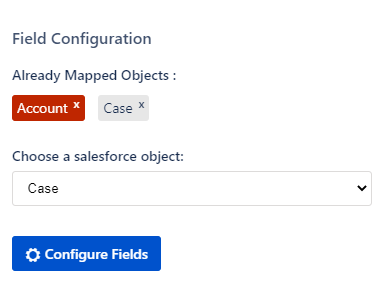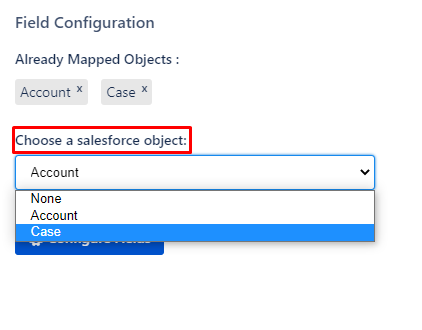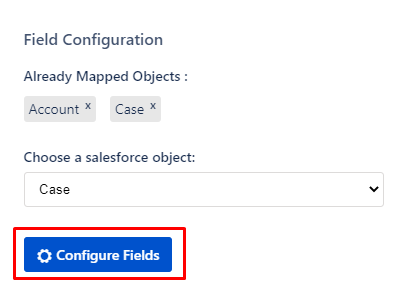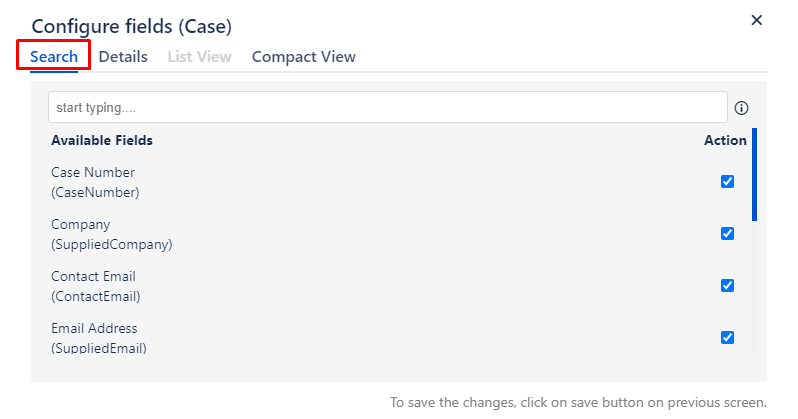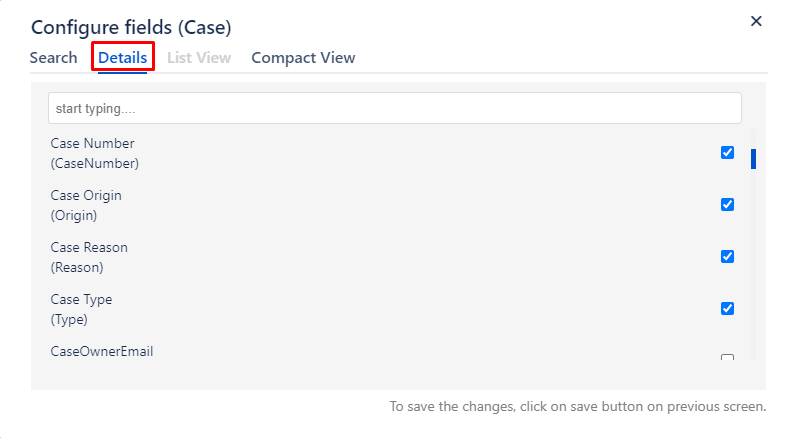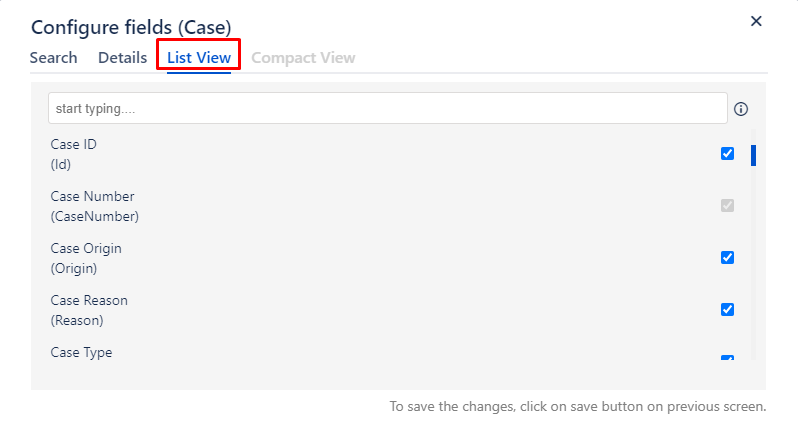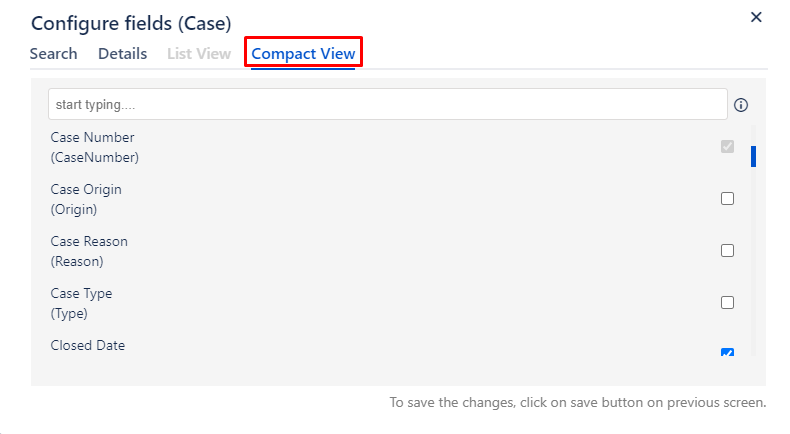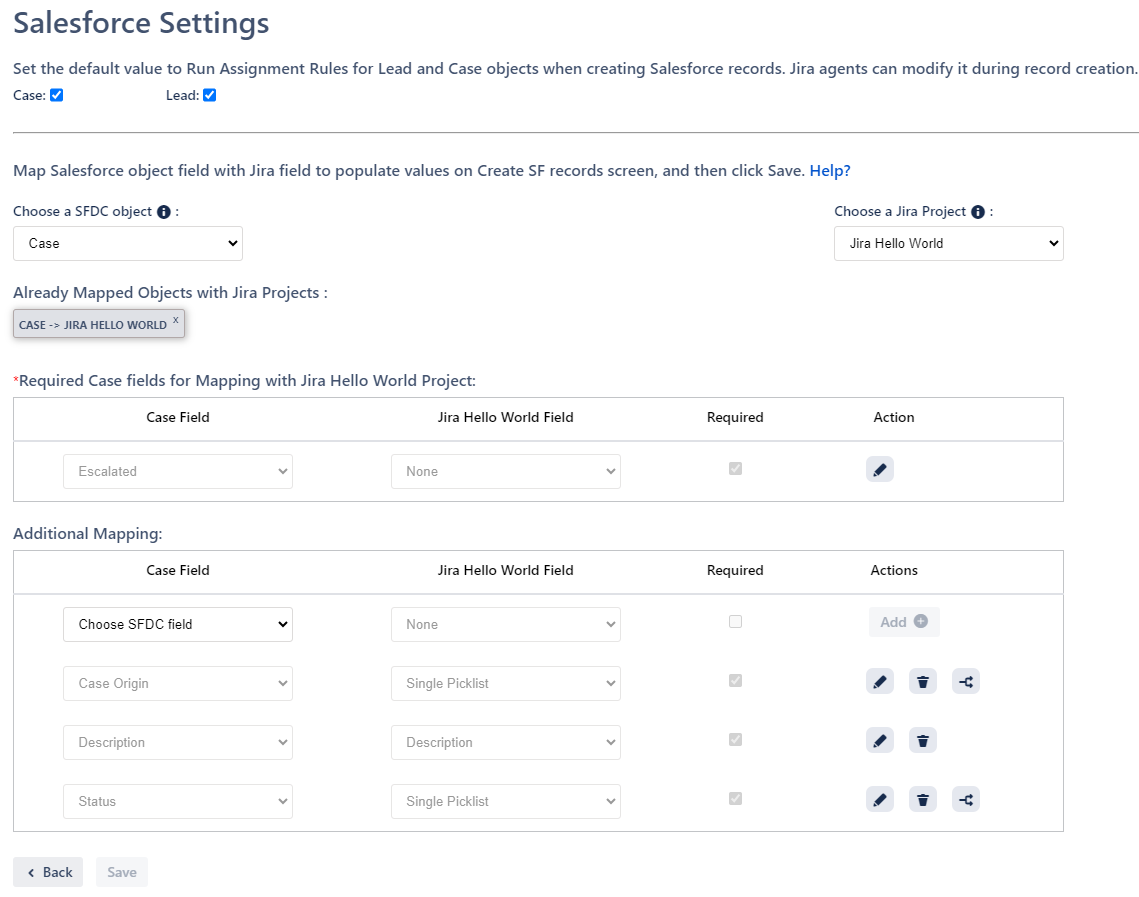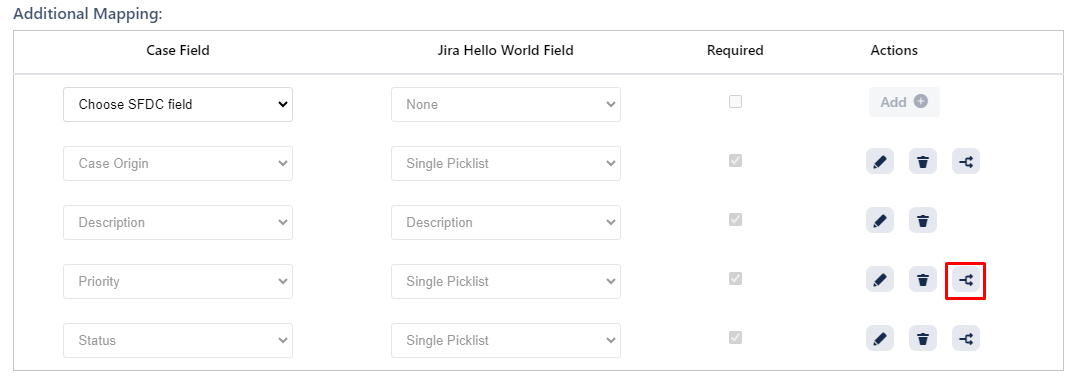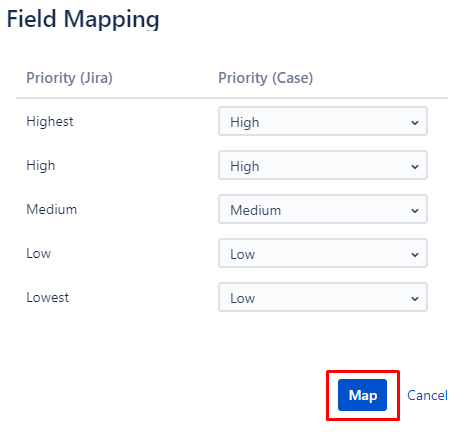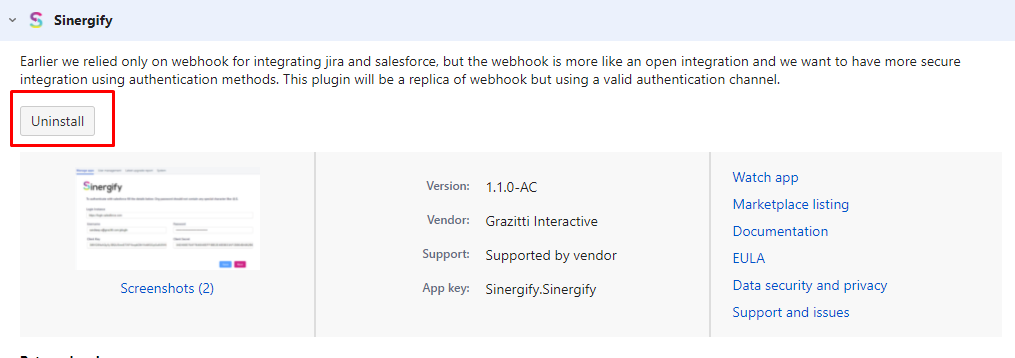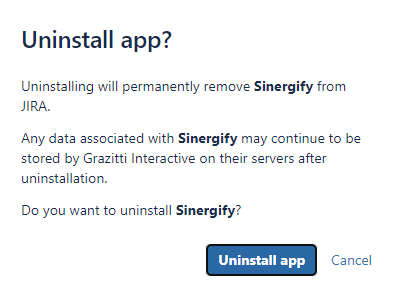Jira Cloud Plugin
Published Date: 02-09-2024
Read Time:
 Important!
Important!
This documentation is related to Jira Plugin Version 4.0. In order to leverage all the latest features of Plugin on your respective Cloud/Server Instance, kindly make sure your Salesforce side package requirements are met. i.e. Sinergify Package on Salesforce should be updated to Version 5.x or above from AppExchange
For Queries drop us an email at [email protected].
Sinergify Plugin
Sinergify plugin allows Jira users to sync Jira updates to Salesforce. With configurable syncing, the admin can decide what updates to be synced from Jira to Salesforce. Along with controlled syncing, the Jira plugin now also offers additional capabilities for Jira Users. Refer to the below use-cases for an overview.
Jira Plugin Use Cases
-
Create Salesforce Records from Jira.
-
The user has the ability to create Salesforce records directly from Jira. This feature will show all the mapped Jira fields relevant to the current object and project.
-
Lets see an example of a Salesforce Case.
-
Review and update the fields and then hit “Create”. A new record will be created inside Salesforce.
-
The newly created record will be linked to the Jira record and will be visible at the top of the list.
-
The redirect button will open the record inside the Salesforce environment. (Salesforce login is required)
-
Search and Link Salesforce Records
-
Find your Sinergify Application on the Jira Record Panel.
-
Select the link button as shown below, to link an existing Salesforce record.
[Link an existing Salesforce record from Sinergify List View]
[Link an existing Salesforce record from Sinergify Compact View]
-
A new window will open.
-
Search Salesforce records by typing the appropriate keywords in the search field.
-
Select the records that you want to link from available search results.
-
Select “Link”. The specific record will now be linked to the Jira ticket.
-
View Linked Salesforce Record Details
-
You will see the linked records within the Sinergify App Under the Specific Object. For. eg. Case, as shown below.
[Viewing a Salesforce record overview from Sinergify Compact View]
-
To see a more detailed view of the linked Salesforce record, click the Pop Out Icon as shown in the images below.
[Compact View: Open Salesforce Record Detailed View via Pop Up]
[List View: Open Salesforce Record Detailed View via Hyperlink]
-
A new window will pop up, and you will see the three tabs along with the Case object Details i.e Case Number.
-
Details: This tab is used to show all the fields which are selected under the configuration screen for the current object.
-
Comments: The comments tab will display all the case comments posted in Salesforce. We can also post the Case comments from Jira, posted comments will be displayed along with the signature. The Tab visibility can be controlled by a Jira Admin.
-
Feed Post: The feed post will display all the Feed items of the current Salesforce record and we can also create a feed post from Jira, posted feeds will be displayed along with the signature. The Tab visibility can be controlled by a Jira Admin.
Points to remember:
Feed post tab will also have support for Rich Text .
The feed post tab will be available for only those Salesforce objects whose feed is enabled under Salesforce. Jira Admin can further control tab visibility as explained below under ‘Install and Setup Plugin in Jira’.
-
Unlink Salesforce records
-
If you wish to remove a Salesforce record that is already linked to the current Jira, select Unlink. Multiple records can be unlinked at once.
-
Click on the checkbox to “Unlink” the records.
-
Once you click on the Unlink button, a pop-up will be displayed with the records. Review the Records and then select “Unlink”.
Let's follow the step by step configuration guide below to achieve the above use cases.
Setup Plugin in Salesforce
Before we install the application in Jira, we need to create and set up a Connected App within Salesforce.
-
From the Setup page in your Salesforce Org, enter ‘App Manager’in the Quick Find box and click on it from the search results
-
Select New Connected App to create the app.
-
Basic Information
-
In the Basic Information area of the page, specify the following information to describe the connected app.
-
For the Connected app’s name, enter a name. For example, you can use ‘Sinergify Jira’.
-
For the Connected app’s API name, which is a unique identifier used when referring to the app programmatically, just press Tab. The API name defaults to the connected app’s name, replacing spaces with underscores.
-
For the Contact email, enter your email. Salesforce uses this contact information if they need to contact you about the connected app.
-
For the Logo image URL, leave it blank.
-
For the Icon URL, leave it blank.
-
For the Info URL, leave it blank.
-
For the Connected app’s description, enter the Connected app to securely access Sinergify Jira Plugin.
-
API (Enable OAuth Settings)
-
In the API (Enable OAuth Settings) area of the page, select Enable OAuth Settings.
-
Enter the callback URL that will be: JiraInstanceURL/plugins/servlet/ac/Sinergify.Sinergify/Authentication?s=Sinergify.Sinergify__Authentication
-
Move ‘Full access’ and ‘Perform requests on your behalf at any time’ options from ‘Available OAuth Scopes’ to ‘Selected OAuth Scopes’.
-
Deselect the "Require Proof Key for Code Exchange (PKCE) Extension for Supported Authorization Flows" Checkbox.
-
Leave any other settings as default and select Save.
-
If the below pop-up is visible, select Continue.
-
Permitted Users - Admin approved users are pre-authorized
-
IP Relaxation - Relax IP restrictions.
-
Refresh Token Policy - Refresh token is valid until revoked
-
Select Save.
-
On the same page, click Manage Profiles.
-
Check the box(es) next to the profiles that you want to include and select Save. Make sure the profile of the specific Salesforce user who will be used to Authenticate Jira Plugin is checked.
Install and Setup Plugin in Jira
-
Installation
-
Select Apps, under the drop-down menu select, Find new apps in your Jira instance.
-
Enter Sinergify in the Search for apps input box and press enter.
-
Select Sinergify under the results.
-
Select Get App to install the application in the background. Follow the steps below once the app is installed.
-
Authentication
-
In the Apps drop-down, select Manage your apps.
-
Select Authentication under the Sinergify sub-section on the left panel.
-
The authentication screen will appear.
-
Option to “Enable or Disable the Plugin” Sinergify plugin allows updates to sync from Jira to Salesforce. With configurations, the admin can decide what updates to be synced from Jira to Salesforce, configure the Salesforce component on Jira View, Salesforce record creation and linking from Jira.
-
Enter the Salesforce login instance URL along with the Client key (consumer key) and Client secret (consumer secret) of your connected app.
[You can now use the Consumer Key and Consumer Secret that you saved earlier in Connected App Setup, Step 6]
If you have a developer or production org, the URL will be https://login.salesforce.com, If not, it will be https://test.salesforce.com
-
Select Login to Salesforce. This will redirect you to the Salesforce login page. Type in your credentials and Select “Allow” on the Allow Access pop-up screen.
-
If the authentication process is successful, the status of Salesforce will be updated from "Not Connected"to "Connected." The Jira Administrator will be able to see a few additional details as mentioned below.
-
Select Nextto Setup the Event Configuration screen.
-
Event Configuration
-
Event Configuration is used to Configure settings for Jira Issue related events.
-
Select Project: User can select the project by clicking on the dropdown. Projects whose mapping is done on Salesforce will be visible in the list. See the reference screenshot below:
-
Select Issue Types: Click on the Dropdown to select the Issuetypes corresponding to the chosen project. Only those Project and; Issuetypes will be available to select for which the mapping is present in Salesforce Sinergify Admin Setting.
-
Sync: Click on the “Sync” button to sync the Projects and Issuetypes from Salesforce.
Note:
-
Issue Related Events : Click the Issue-related events for which the events should work. Once done click “Save”.
-
Configuration
-
Settings for panel on issue screen
-
Show Panel on Issue Screen: Toggle this option to show or hide the Sinergify application completely from the Jira Issue Record.
-
Once you click on the hyperlink the following screen will appear. Users will be able to see all the mapped Projects and Issuetype Configured inside the Sinergify Admin setting.
Note: Modifying (Changes in project or issue types ) the Sinergify Project settings will automatically enable the “Sync” option.
-
Panel Location: Select the location of Sinergify application, either Right Side or Left Side. By clicking on the icon [i], you can see a more detailed view about panel location and its use case.
-
Allow linking of records on the panel: Toggle this option to Enable or Disable the linking of Salesforce records.
-
Allow Unlinking of records on the panel: Toggle this option to Enable or Disable the unlinking of Salesforce records.
-
Salesforce Case Comments
-
Show Case Comments: Toggle the button to Enable or Disable the Case Comments Tab for Jira Users.
-
Post Case Comments: Toggle the button to Enable or Disable posting of new Case Comments for Jira Users and keep it to view only.
-
Salesforce Chatter Feed
-
Show Feed Posts: Toggle the button to Enable or Disable Feed Tab in Jira Records.
-
Create feed Posts: Toggle the button to Enable or Disable creation of new Feed Posts and keep it to Read only.
-
Field Configuration
-
Already Mapped Objects: This will show you the Objects that have been mapped on the Salesforce side Administration Panel. If the Object is removed from Sinergify then the Object will be shown in Red. See the reference screenshot.
If you donot see any Object, kindly complete the Project Mapping & Field Configuation on Salesforce.
-
Choose a Salesforce Object: Select the Salesforce object for which you want to Configure and then Select Configure Fields. If no Object is selected, the button will not be visible. Objects in the drop-down will appear with respect to what you have configured in the Salesforce Sinergify Admin setting.
-
Configure Fields: Click on “Configure field” fields for Object. A new screen will pop up with 4 tabs - to Configure the Search, Details, List View, Compact View.
-
Search: Search results will be pulled in Jira using the fields selected below. You can select upto a max of 5 fields. Search your Salesforce fields under Available Fields and then select the Checkbox. (Only Search Compatible fields are visible).
-
Details : Salesforce object fields selected in this section will be used to show salesforce record details on the Jira issue page. Search your Salesforce fields under ‘Available Fields’ and then select the Checkbox. The order of the fields will be displayed on the Jira page as per the selection.
-
List View: The list tab will contain only those fields whose maximum character length is less than 256 characters and the selected field will be displayed on the list view panel on Jira issue Page. For. E.g. For Objects like Case, Case Number will be auto selected. See the reference screenshot below.
-
Compact View: The Compact View will only display those fields whose maximum character length is less than 256 characters and at most 5 fields can be displayed in that view. Standard fields like Case Number (When Case Object is mapped) will be Pre-seleced and displayed by default.
Once you have selected all the desired fields under each section, close the popup window from top right. Select Save and then Select Next.
-
Salesforce Settings
It is used to map Salesforce Object fields with Jira project fields to prepopulate the field values on Create Salesforce Record Screen. See the reference screenshot below:
-
Salesforce Assignment Rules : Set the default value to run assignment rules for Lead and Case objects when creating Salesforce Records.
-
Choose a Salesforce Object : Choose the Salesforce object from available options . This will show objects that are mapped in both the Salesforce Admin setting and Jira Configuration screen.
In case there are no objects visible here that have been mapped in Salesforce, you should navigate to the Configuration Screen and map the object.
-
Choose the Jira Project : Choose the Jira Projects from available list, The dropdown shows the projects Mapped in Both Salesforce Admin setting and Jira Configuration screen.
In case there are no projects visible here that have been mapped in Salesforce, you should navigate to the Configuration Screen and map the Project.
-
Required Mapping : In the Required Mapping, Admin can map the required fields of selected Salesforce objects. Once done, simply click on the "Save" button.
-
Additional Mapping : Admin can map additional Salesforce Non-Required fields and also have the option to mark the fields mandatory/required by checking the ‘Required’ box on the fields. The marked fields would require a value while creating a record from Jira.
-
Picklist option : You can also decide the mapping of picklist values which is applicable only for picklist type fields. To do this, click on the icon as shown in the screenshot below.
Plugin Uninstallation
Please follow the steps below in case Plugin needs to be uninstalled from the Jira Instance.
-
Click on the Apps tab, and under the drop-down menu, click Manage your apps.
-
Click on the Uninstall option under the Sinergify app.

 Feedback
Feedback
